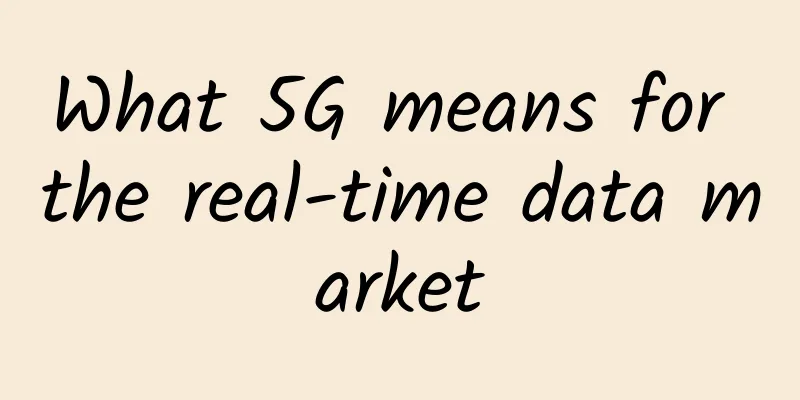What exactly is RedCap?

|
With the continuous advancement of 3GPP R17, a new term has gradually become popular, that is, RedCap. What exactly is RedCap? Why is it being introduced? What is the difference between it and the current 5G? Let’s take a look at this article’s in-depth analysis… What is RedCapRedCap, the full name of which is Reduced Capability, means "reduced capability" in Chinese. It is a new technical standard specially researched by 3GPP in the 5G R17 stage. You may be unfamiliar with the name RedCap, but you may have heard of its previous name, NR light (NR lite). To put it simply, RedCap is a lightweight 5G. It is worth mentioning that some domestic articles say that the full name of RedCap is Reduced Capacity. This is obviously wrong. Capacity means capacity and Capability means ability. Why is there RedCap?5G is doing well, so why do we need a lightweight version? Here are the reasons: As we all know, 5G is divided into three major application scenarios, namely eMBB (enhanced mobile broadband), uRLLC (low latency and high reliability communication), and mMTC (massive machine type communication). eMBB is an upgrade of MBB (mobile broadband) in the 4G era, focusing mainly on indicators such as network speed, bandwidth capacity, and spectrum efficiency. The 5G mobile communications we are currently using belong to the eMBB scenario. As for uRLLC and mMTC, the former focuses on reliability and latency, while the latter focuses on the number of connections and energy consumption. Both mainly serve the industrial Internet, including industrial manufacturing, Internet of Vehicles and other vertical industries. With the continuous commercialization of 5G, people have found that the above three application scenarios still cannot fully meet the needs, and there are "blind spots" that are not covered. Everyone should have noticed that at this stage, 5G applications in various industries have entered a ramp-up period. It seems to be in full swing, but in fact there is a lot of resistance. Among them, one of the biggest obstacles is the high cost of 5G terminal chips and modules.
5G terminal chips and modules are extremely complex in design, with extremely high R&D thresholds and huge investment costs. Their prices have also remained high. If the price doesn't come down, users will certainly not be willing to buy it. If this continues, how can 5G develop? Moreover, people have also found that most industry application scenarios do not have very high requirements for indicators such as speed. The existing capabilities of 5G have exceeded the needs of the scenarios. Therefore, the industry has proposed whether it is possible to redo the balance between cost and performance, appropriately sacrifice some indicators, lower some requirements, and then reduce costs. In this way, RedCap (NR light) was born.
Does what I said above sound familiar to you? Yes, I used the same description when I popularized NB-IoT/eMTC. However, today, 4G has become 5G, and RedCap is to 5G what NB-IoT/eMTC is to 4G. In other words, NB-IoT/eMTC is a castrated version of 4G, and RedCap is a castrated version of 5G. In terms of technical characteristics, RedCap is between eMBB (ultra-wideband) and LPWA (low-power wide area network, NB-IoT, etc.). RedCap mainly targets applications that have bandwidth, power consumption, cost and other requirements between eMBB and LPWA. Its bandwidth and communication bit rate are lower than eMBB, but much higher than LPWA. Its power consumption and cost are higher than LPWA, but much lower than eMBB. The ability of RedCap is very "balanced" (the yellow line is RedCap) In fact, judging from current practical applications, RedCap is not a technology that is in urgent need. I have told you before that the Internet of Things is divided into high-speed, medium-speed and low-speed. RedCap actually corresponds to medium-speed or medium-high-speed. Currently, LTE Cat.1 and Cat.4 have covered this part of the demand. "631" structure Experts proposed RedCap for the long term. To put it bluntly, RedCap is more of a preparation for the future withdrawal of 4G LTE networks. When 4G LTE is phased out, NB-IoT, eMTC, Cat.1, and Cat.4 will cease to exist. At this point, RedCap will serve as a replacement. How does RedCap achieve low costs?Now let’s come to the key part of this article, how exactly RedCap was castrated and reduced. The table below shows the main differences between 5G RedCap devices and 5G traditional devices. Original image from Ericsson (translated by Xianzao Classroom) First, RedCap has a smaller spectrum bandwidth. In the Sub-6GHz band, RedCap's bandwidth is 20MHz, which is smaller than the 100MHz of traditional 5G. Secondly, RedCap reduces the number of transmit and receive antennas and the number of MIMO layers. For the Sub-6GHz frequency band, the receiving links of the RedCap terminal can be reduced to 1 or 2, and the corresponding downlink MIMO is reduced to 1 or 2 layers of reception. This reduces the requirements for the terminal's RF transceiver and baseband processing module. Third, RedCap uses a simpler modulation method called 64QAM, which also means that the requirements for RF and baseband are greatly reduced. Fourth, RedCap uses half-duplex FDD (HD-FDD), which can transmit and receive at different frequencies at different times without the need for a duplexer. This not only saves costs, but also achieves better integration capabilities (duplexers are generally larger), reduces the space occupied by equipment, and is conducive to the miniaturization of equipment. Fifth, RedCap has introduced some power-saving measures, such as enhanced discontinuous reception (eDRX) and longer sleep modes, which allow terminals to reduce power consumption and achieve higher battery life. Based on the above changes, it is predicted that RedCap will reduce the cost of baseband and RF by about 70% compared with 5G public network terminals. Some even say that the overall cost of RedCap can be reduced by 2-5 times, or even 7-8 times. After talking about the good, let's talk about the bad. What did RedCap lose? The first is the rate. As the terminal bandwidth decreases, MIMO reception becomes simpler, and the highest modulation order decreases, the peak rate of RedCap will also drop significantly. According to the UE peak rate calculation method given in 3GPP TS36.306, the theoretical peak rate of RedCap is about 80~90Mbps. In terms of coverage capability, due to the reduction in antenna design and the size limitation of wearable terminals, the coverage capability has been slightly reduced. In terms of transmission delay, HD-FDD cannot send and receive at the same time, so the transmission delay will increase. However, for RedCap's application scenarios, these problems do not have much impact. It is worth mentioning that, considering the application scenarios and costs, 3GPP proposed that RedCap can only work in one frequency band at a time, and does not need to support carrier aggregation or dual connectivity. (Of course, early RedCap terminals must be dual-mode, after all, 5G coverage is not perfect.) I almost forgot to mention the price. According to forecasts, the price of RedCap's modules will be controlled between 100-200 yuan (RMB), which is much lower than the current 5G modules that cost several hundred yuan, but higher than the NB-IoT modules that cost several dozen yuan. RedCap's typical business scenariosCurrently, according to the standard definition of 3GPP R17, RedCap supports three major business scenarios: wearable devices, industrial sensors and video surveillance. The specific network requirements for these three scenarios are shown in the following table: Original image from Ericsson (translated by Xianzao Classroom) Wearable devices, such as smart watches. At present, mainstream smart watches on the market only support 4G, not 5G, because 5G chips are too expensive, generate a lot of heat, and the high rate of eMBB is a bit redundant for the screen size of the watch. The use of RedCap can fully meet the video call needs of smart watches. Not only is the downlink bandwidth sufficient, but the uplink bandwidth is also much higher than LTE Cat.1. In addition, RedCap can also meet the needs of smart watches in terms of size and power consumption. When will RedCap be commercially available?In June 2019, at the 3GPP RAN #84 meeting, RedCap was first presented to the public as an R17 Study Item. In March 2021, 3GPP officially approved the establishment of the NR RedCap UE standardization (i.e. Work Item) project. According to the plan, the date when 3GPP R17 is frozen is the day when RedCap standardization is completed. Currently, due to the COVID-19 pandemic, 3GPP has postponed the R17 schedule by 9 months. According to the latest progress, 3GPP R17 will be frozen in June 2022. In other words, the standardization of RedCap will be completed in June next year. 3GPP Release 17 Timeline According to experience, it takes at least 1-2 years after standardization to achieve initial industrialization. Therefore, it is expected that by the middle of 2023 (or early 2024), we will see early commercial products of RedCap. At present, domestic chip companies including Unisoc are making arrangements for RedCap, and I believe they will launch commercial chips as soon as possible. With chips, there will be modules and products. Well, that’s all about RedCap. Thank you for your patience. See you next time! References: 1. https://www.ericsson.com/en/blog/2021/2/reduced-cap-nr, Ericsson 2. "Chip Opportunities Brought by 5G R17", Li Fei, Semiconductor Industry Observation 3. RedCap, Here We Come!, 5GSA 4. "5G RedCap UE Key Technologies and Standardization Progress", Xu Xiayan, Mobile Communications; 5. 3GPP Enhancements Planned for 5G Release 17 Include RedCap, Coverage Improvements, Satellite Standards, and More, sierrawireless.com 6. https://blog.3g4g.co.uk/2021/07/introduction-to-5g-reduced-capability.html, 3G4G 7. 3GPP.org |
<<: An article about Google Cherry IPU
>>: Five ways 5G will change the air travel experience
Recommend
RackNerd: AMD Ryzen series KVM adds Seattle data center, starting at $14.18 per year
RackNerd has previously launched AMD Ryzen CPU+NV...
How to play the NB-IoT game in 2019?
NB-IoT technology is a low-power wide area networ...
Smart Manufacturing under 5G: A New Model of Smart Factory Automation
[[286782]] As a new generation of mobile communic...
Huawei China ICT Ecosystem Tour 2018 Series of Activities Invite You to Win the "Ecological Era" Together
[51CTO.com original article] In March this year, ...
The Importance of Ethernet Cabling for High-Speed Internet in Your Home
In today's digital age, having a reliable and...
[Christmas] Unesty VPS 50% off, €2.1/month-AMD Ryzen9/2GB/50G NVMe/1Gbps unlimited traffic
Unesty is a German hosting company founded in 201...
In addition to the legend of getting rich quickly, what else is possible with blockchain?
The prevalence of various speculations has made b...
Hengchuang Technology: Hong Kong cloud server starts from 32 yuan/month, buy 2 months of dedicated server and get 1 month free
Hengchuang Technology (henghost.com) has released...
"Hyper-converged Data Center Network Lossless Ethernet Scenario Level Evaluation Specification" released, Huawei is the first to complete the evaluation
The "2021 Open Data Center Summit" was ...
ZJI newly launched Korean BGP+CN2 server, 20% off monthly payment starting from 440 yuan
ZJI has launched a new product! The business is a...
spinservers: San Jose 10Gbps bandwidth server starts at $109/month, Dallas 10Gbps server starts at $89/month
spinservers is a site under Majestic Hosting Solu...
Do you know the origin and function of Wi-Fi?
Since its introduction 25 years ago, Wi-Fi has pl...
5G news is coming! China Mobile has opened trial commercial services to 15 provinces: over 100 million users, no need to change to 5G phones
On October 14, at the "5G Message Ecosystem ...
How to connect multiple Ethernet switches?
Ethernet is not a new technology as it has been u...
To ensure the healthy development of 5G, we must start with the standardization of business data release
On the eve of the Spring Festival, the Ministry o...









